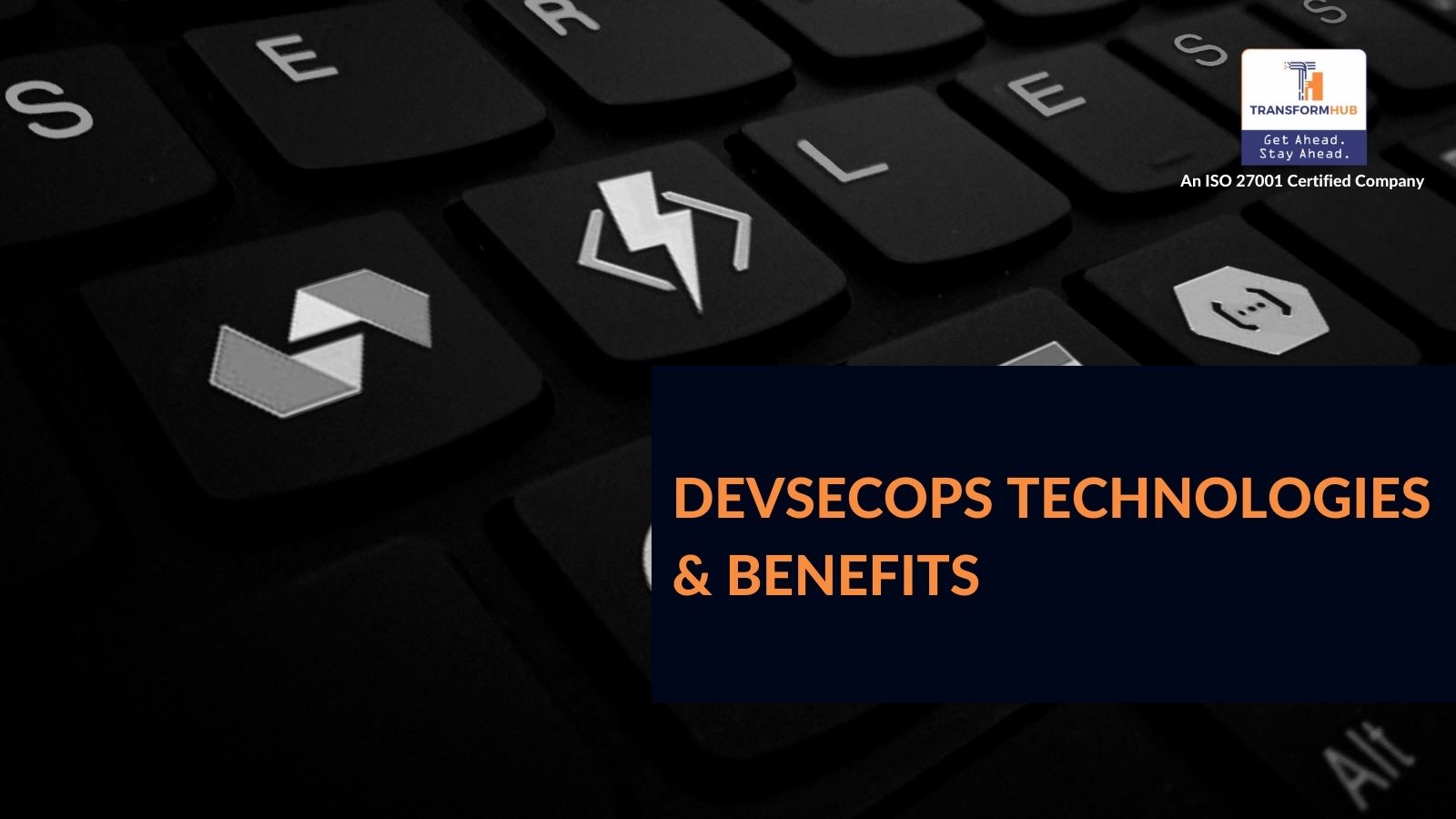Key Components for the DevSecOps
The phrase DevSecOps has been bandied around a lot in recent years, and for good reason. The software business is more competitive than ever, and with changing customer expectations, today's development firms are frequently racing against the clock to release the next creative product. In the goal of speed, security is frequently compromised.
Unfortunately, many businesses have discovered the hard way that ignoring security in order to come to market faster is too costly.
DevSecOps allows security testing to be included earlier in the software development lifecycle (SDLC). "Shifting security left" or "shift left" is a typical term for this. DevSecOps provides seamless application security early in the software development lifecycle, rather than towards the end, when detecting vulnerabilities and implementing mitigations is more difficult and expensive.
Many consider DevSecOps to be the next step in the DevOps process, in which conventional department silos melt, security has a seat at the design table, and a new culture of shared security responsibility arises. This shared ownership concept aims to bring together traditionally divided camps — developers and IT security experts — around a common objective of maximizing innovation and speed to market without compromising security and compliance. By incorporating security processes and practices into developers' everyday workflow, DevSecOps aims to find a balance between agility and security. DevSecOps, like DevOps, is powered by automation at every turn.
Top 5 Key Components of DevSecOps
DevSecOps approaches may include these important components:
- Collaboration
Collaboration begins with senior leadership's acceptance of a shared-responsibility mentality about security across the firm. The purpose of collaboration is to develop and release the highest-quality product as quickly as possible while adhering to all security and regulatory regulations.
Security teams have a role, beginning by becoming familiar with DevOps principles and incorporating them into security. Delivering security capabilities in modest, regular installments and automating security chores whenever possible are examples of this. Security best practices, requirements, threat awareness, and tools should all be learned by developers.
- Communication
It is necessary to reduce the communication gap between developers and security experts. In order to communicate the importance of controls and the rewards of compliance to developers, security professionals must use developer-friendly language. Discussing security threats in terms of project delays and unexpected additional work for developers, for example, would emphasize the necessity of managing those risks.
Developers should have a comprehensive understanding of their security obligations so that they can fully embrace their position as contributing partners in making an organization more safe and compliant. These duties include being aware of security threats and creating code that adheres to security best practices. Vulnerability testing should be done throughout development, and defects should be fixed as they are identified.
- Automation
Automation might be the most important aspect of a successful DevSecOps project. It enables security measures to be integrated into the development process, ensuring that security does not become a burden for development teams. Security testing and analysis may be incorporated into CI/CD pipelines to offer secure software without slowing down development and innovation. Both the development and security teams are now satisfied, which is a significant step in validating your DevSecOps approach and keeping everyone on board.
Security measures like "break the construction" are made possible via automation. This security failsafe is based on an automatic risk scoring system that sends out an alarm when the danger level rises over a certain level. At this moment, all building procedures are halted until the security problem is resolved. Developers can complete the build and deploy the application after the security problem has been resolved.
- Security of Tools and Architecture
Safe DevOps environments provide the foundation for secure applications. Any DevOps system must protect its tools, access, and architecture. Before these systems have been approved for widespread use, security personnel should take the lead in selecting and testing the configurations of all system security tools to ensure proper operation.
The management of identification and access should be treated carefully. Access to DevOps architecture and datasets should be controlled by security teams, with credentialed usage protected throughout the development process. To control access, you can use multi-factor authentication (MFA), least-privileged access, and just-in-time temporary access to high-level privileges. Furthermore, CI/CD pipelines should be separated to prevent lateral movement, and any unneeded DevOps tool accounts should be removed.
Security and compliance controls are baked into the infrastructure with DevSecOps, allowing it to encompass all environments, including the cloud. Security monitoring, vulnerability scanning, and patching are performed on all workstations and servers on a regular basis.
When checking into repositories, automated tools examine every code to ensure there are no secrets. In addition, all new VMs and containers are automatically set up with the right controls to enable them to resist automatic rebuilds. DevOps tools and secrets are stored in centralized storage systems, which are all encrypted and secured with multi-factor authentication (MFA).
- Testing
Security testing has traditionally been the last stage before a product's release. Testing should ideally take place throughout the whole development process. Automated testing is essential for keeping security up to date with development.
Simple operations like screening code for secrets before it's checked into repositories, ensuring passwords aren't logged in event logs, and analyzing apps for harmful code may all benefit from automation. Static application security testing (SAST), dynamic application security testing (DAST), and less common but equally important approaches like penetration testing, Red Teaming, and Threat Modeling are all part of an effective testing routine.
These latter methods can be useful since they approach code from a hacker's perspective without disturbing production. Many firms now use "bug bounty" programs to encourage rigorous testing by paying for the reporting of suspected security concerns.
DevSecOps evaluates testing techniques by tracking important metrics to determine risk reduction and overall security effectiveness throughout the development process. Developers are given self-assessment scorecards that ask a number of pertinent questions to keep them honest and responsible.
How Does DevSecOps Work?
The advantages of DevSecOps are straightforward: Enhanced automation across the software delivery process decreases assaults and downtime while eliminating errors. The process of incorporating security into a DevOps framework may be performed smoothly with the correct DevSecOps technologies and practices.
Consider the following DevOps and DevSecOps workflow:
- Within a version control management system, a developer develops code.
- The modifications are saved in the version control system.
- Another developer downloads the code from the version control management system and does static code analysis to find any security flaws or problems in the code quality.
- Using an infrastructure-as-code technology like Chef, an environment is then constructed. The program is installed, and the system's security parameters are applied.
- The freshly deployed application is next subjected to a test automation suite, which includes back-end, UI, integration, security, and API tests.
- The program is delivered to a production environment if it passes these tests.
- This new production architecture is constantly monitored for active security risks to the system.
Organizations may work smoothly and swiftly toward a common objective of improved code quality, security, and compliance with a test-driven development platform in place with automated testing and integration as part of the workflow.
Benefits of DevSecOps
DevSecOps' two key advantages are speed and security. Development teams produce better, more secure code faster and hence at a lower cost. Following is the list of benefits of DevSecOps:
- Rapid, cost-effective software delivery
When software is built outside of a DevSecOps environment, security issues can cause significant delays. Repairing coding and security flaws may be time-consuming and costly. DevSecOps' quick, secure delivery saves time and money by reducing the need to repeat a procedure to fix security vulnerabilities after they've occurred.
Because integrated security eliminates redundant reviews and wasteful rebuilds, this becomes more efficient and cost-effective, resulting in better secure code.
- Improved, proactive security
DevSecOps starts the development cycle with cybersecurity protocols in place. The code is reviewed, audited, scanned, and tested for security concerns throughout the development cycle. As soon as these problems are detected, they are remedied. Before adding further dependencies, security issues are addressed. When preventive technology is found and applied early in the cycle, security vulnerabilities become less pricey to resolve.
Furthermore, improved coordination between development, security, and operations increases an organization's responsiveness to events and problems. DevSecOps approaches shorten the time it takes to patch vulnerabilities, allowing security teams to focus on other important tasks. These techniques help assure and simplify compliance, avoiding the need to modify application development projects for security.
- Accelerated security vulnerability patching
One of the most important advantages of DevSecOps is how rapidly it handles newly discovered security vulnerabilities. The capacity to find and repair common vulnerabilities and exposures (CVE) is harmed as DevSecOps integrates vulnerability screening and patching into the release cycle. This reduces the amount of time a threat actor has to exploit flaws in public-facing production systems.
- Automation compatible with modern development
If a firm employs a continuous integration/continuous delivery pipeline to deploy its product, cybersecurity testing may be included into an automated test suite for operations teams.
The project and organizational goals have a big impact on security check automation. Automated testing can verify that included software dependencies are patched to the right levels and that security unit testing succeeds. It may also use static and dynamic analysis to test and secure code before releasing it to production.
- A repeatable and adaptive process
Organizations' security postures improve as they become older. Repeatable and adaptable procedures are ideal for DevSecOps. As the environment develops and adapts to new requirements, this guarantees that security is implemented uniformly across the board. Automation, configuration management, orchestration, containers, immutable infrastructure, and even serverless compute environments are all features of a mature DevSecOps implementation.
Hire a Certified DevSecOps Partner | TransformHub
Hiring a Certified DevSecOps Professional (CDP) or DevSecOps Engineer should be a top priority if DevSecOps is crucial to your company. A DevSecOps program may be created, implemented, and managed with the support of a dedicated CDP or engineer. Furthermore, the expert will be able to detect any gaps or possible vulnerabilities in your company's present DevSecOps program, as well as provide solutions to address any difficulties.
While the initial investment in a new employee may be high, employing a specialized DevSecOps person might help your firm avoid multiple security mishaps in the long run. TransformHub, as a provider of expert DevSecOps consulting services, is an excellent choice. DevSecOps will become increasingly important as organizations continue to use cloud services and consumers across all sectors become more concerned about their providers' security posture.
Thankfully, security has finally taken its way in development, and today's developers and security teams may have it all thanks to DevSecOps. Security does not have to be lost for innovation, and performance and speed do not have to be surrendered for security. The moment has come for developers and security experts to collaborate to build safe, high-quality, high-performance, and compliance software. The moment has come for DevSecOps.
So now what you have to do is, contact your right DevSecOps consulting services partner. Contact TransformHub:
Email: sales@transformhub.com
Phone: +65 31384660
Share this
You May Also Like
These Related Stories

7 Tips to Evaluate and Choose the Right DevSecOps Solution

DevSecOps Technologies & Benefits




